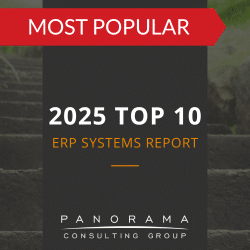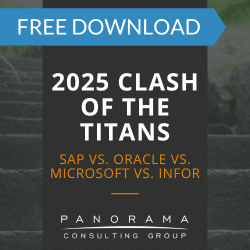Many construction firms, architecture firms, and engineering firms are modernizing their design methods by implementing building information modeling (BIM) software.
As part of this implementation, some companies are integrating this software with their ERP system to achieve full data visibility. If you’re thinking about a similar strategy, it’s important to understand the challenges of implementing BIM software.
Today, we’re sharing top pain points and how to avoid them in your deployment and integration.
6 Challenges of Implementing BIM
1. Infrastructure
While the technical aspects of integration are important, the most prominent BIM challenges are people-based, specifically in the C-suite. When a leadership team decides to implement BIM software, it’s critical that everyone involved understands what this decision means.
While leaders might know the basic benefits that BIM software provides, they do not fully understand the implications that a project will have. Once your team understands the true scope of BIM, they can take the steps required to engage the right people, access the right resources, and lead the project to the finish line.
Contemplating litigation?
We have multiple software expert witnesses available for provision of reports, depositions, and testimonies.
2. Staffing Issues
When BIM and non-BIM systems work concurrently, you can run into staffing issues.
To optimize team efficiency, it’s important to plan your BIM training initiatives according to the availability of your team members. The more people who know how to use the system, the fewer bottlenecks will occur.
In large and medium-sized companies, aligning equipment with BIM may be relatively easy. These companies have large teams in place that can adapt accordingly.
However, this isn’t always the case with smaller companies. In companies with fewer resources, it is often harder to get entire teams to commit to the project.
Navigating these staffing issues can be time-consuming and expensive, so it’s important to set your strategy early.
3. Lack of Execution Strategy
Integrating BIM software is a complex process that requires the support of many internal resources, including subject matter experts. As such, it’s essential to ensure that all project activities are clearly planned and defined in advance.
Make sure your schedule is arranged so BIM can be implemented without sacrificing company objectives. The ideal balance is one that provides the exact level of BIM functionality required to provide expected benefits. With too much BIM technology, users will be unable to keep up and the technology could go to waste.
4. Employee Resistance
Any time a company introduces new technology to its workforce, there is the potential for resistance. Most of the time, it is because the technology upgrades are unfamiliar and the software is intimidating.
To help avoid these roadblocks, invest early in organizational change management (OCM). An effective OCM strategy centers on some key objectives, which include but aren’t limited to:
• Keeping all employees informed on project updates
• Answering questions and easing concerns as they arise
• Explaining the BIM benefits that team members can expect
• Staying transparent and honest about project information
• Tailoring communication strategies based on different worker groups
• Investing in end-user training and post-implementation support
Robust support from their supervisors and upper management can also help mitigate employee concerns.
5. Lack of Team Collaboration
Implementing BIM is not a one-person effort. It’s even too much for one team to handle on its own. Rather, you’ll need the integrated support of all your key stakeholders.
Unless project members collaborate efficiently with one another, the project could fail to get off the ground.
The participation of all members is more important than who is selected to lead the entire effort. Put plans in place to encourage engagement and set regular meeting dates so everyone can stay informed.
6. High Implementation Costs
Another barrier to BIM implementation is the high cost.
Business leaders should consider all elements of their business that the project will impact, which may include:
• Compliance applications
• Vendor component specification
• Training or hiring new staff members
These items might be less expensive than the platform itself, but they are no less important. For instance, staffing issues could derail a project, no matter how sophisticated the software.
BIM Software Success
Are you thinking about integrating BIM functionality with your enterprise software?
While this technology can transform the way your company creates and manages construction data, it can alter your internal operations. There are new processes to learn, strategies to develop, and costs to consider.
To get around these obstacles, companies may consider hiring third-party enterprise software consultants who have knowledge and experience in these types of projects. A consultant can help keep teams intact and reduce friction. They can also show teams how to integrate BIM technology into their existing business models to maintain a seamless transition.
Our ERP implementation consultants can help you navigate the challenges of implementing BIM. Contact us below to schedule an ERP consultation and get started.














